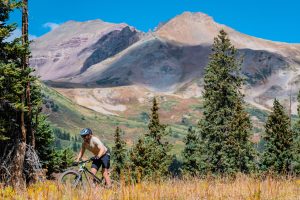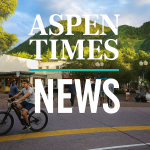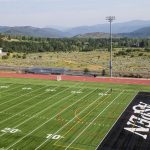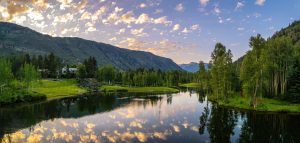Snowmass pursues modeling approach to wildfire mitigation
Town to seek details from Vanderbilt University wildfire specialist

Kelsey Brunner/The Aspen Times archive
Snowmass decided on Monday to pursue a model-focused approach to wildfire mitigation.
The town directed staff to seek details on a wildfire modeling system of Snowmass Village from Dr. Hussam Mahmoud, a Vanderbilt University professor who has dedicated the past decade of his life to wildfire study and specializes in wildfire prediction systems.
“It’s the lowest cost and the biggest benefit,” Snowmass Mayor Alyssa Shenk said of the technology.
Using modeling systems, Mahmoud can predict the potential path of a wildfire with 85% accuracy when given structural details about a community, such as house venting, roofing, decking, and materials, according to Angie Davlyn, executive director of Wildfire Collaborative Roaring Fork Valley. She said it would cost the town $155,000 to create a wildfire spread model for Snowmass.
“Dr. Mahmoud’s model will give us specific areas to focus on and a more targeted approach,” Davlyn said.
Mahmoud’s model identifies “super spreader buildings” — structures most likely to ignite and transmit fire — which has a greater impact than fire hardening buildings at random, she said. When reinforcing structures at random, communities usually have a 30% uptake, meaning 30% of structures are effectively fire hardened, she added.
“And we know that hardening just 10% of (super-spreader) buildings strategically can have a much bigger impact than treating 30% at random,” she said.
Strategic fuel reduction in a community also minimizes the risk of rapid fire spread — another component that would be addressed in the strategic modeling system.
Along with the modeling system, Davlyn presented a “one size fits all” approach to wildfire mitigation, where Snowmass property owners would rid their properties almost entirely of burnable vegetation in the first 5 feet near a building, would keep burnable vegetation at a minimum from 5 to 30 feet, before introducing slighting more beyond that.
Minimizing vegetation near buildings or houses reduces the risk that fire spreads from structure to structure, she said.
“Sometimes, you get the luxury of having a choice where either option is a really good option. I think that’s what we’re sitting on right now,” she said of the two different approaches.
Though he supported the development of a modeling system for Snowmass, Council member Tom Fridstein warned that a fire modeling system wouldn’t mean those in lower risk areas can grow complacent.
Everything Snowmass, once a week—just for you.
The Snowmass Scoop lands in your inbox every Wednesday with the latest news, events, and stories from the village. It’s everything you need to stay connected—all in one place.
Sign up for free at SnowmassSun.com/newsletter.
“It’d help prioritize, but we also can’t put all our faith in the model because Mother Nature doesn’t behave according to models all the time,” Fridstein said, adding, “We shouldn’t think just because you’re in a low probability zone, your house is safe.”
But council felt confident on the applicability of a Snowmass modeling system, directing staff to return with more information about system implementation in the near future.
The town also discussed the benefit of implementing a siren system to warn the entire town — about 3,100 full-time residents and 2,000 structures — in the event of an emergency, such as wildfire. Council members stressed that a siren system remain separate from technology or cell-phone related alerts to account for those lacking wifi or cell phone signal, directing staff to return after conducting more research.
The town also plans to adopt a new wildfire code in accordance with a June state law requiring all municipalities to adhere to a set of wildfire mitigation standards. Council plans to seek public input for new regulations and is required to create a new code by April 2026.
Davlyn reminded the town that in the area there is no “if” with wildfire, only “when,” making it critical to stop the potential for fire spread and mitigate its destructiveness.
“We live in a wildfire prone area,” she said. “There is no avoiding fire.”
Skyler Stark-Ragsdale can be reached at 970-429-9152 or email him at sstark-ragsdale@aspentimes.com.
RESULTS: Runners, bikers tackle annual Grand Traverse races between Aspen and Crested Butte
The Grand Traverse returned — and promptly departed — Aspen this weekend, with Saturday’s trail run and Sunday’s mountain bike race.
Most expensive house for sale in America hits Aspen market
The most expensive house for sale in the country hit the housing market in Aspen last week, a 74.1 acre property listed at $300,000,000.










